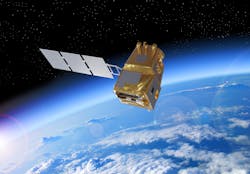Airbus Defence & Space (ADS; Taufkirchen, Germany), the prime contractor in the European Copernicus Land Surface Temperature Monitoring (LSTM) mission, has selected infrared (IR) detectors provider Lynred (Grenoble, France) to develop a new linear shortwave-infrared (SWIR) array to meet the special requirements of the satellite’s imager instrument.
The linear SWIR array will be integrated into a high-resolution radiometer that measures land-surface temperatures. The overall aim of LSTM is to improve sustainable agricultural productivity at field-scale in regions experiencing increasing water scarcity and climate variability. It has as its objective improving how the agriculture sector predicts droughts and addresses other land degradation issues.
This type of IR detector, in particular its performance, is one of the major components enabling the imager instrument to achieve its overall system performance. Equally important is the requirement for the IR detector to operate at nominal performance while withstanding the rigors of space—notably high radiation levels. This makes its role and the requirement to perform reliably all the more critical.
Lynred’s SWIR detector will capture IR light at three different wavelengths (0.945 µm, 1.375 µm, and 1.61 µm). Its design will meet the special needs of the mission, notably a linear array with four different lines (the line at 0.945 µm being duplicated according to mission needs) of 1200 pixels each in the across-track satellite velocity direction and 12 pixels in the long-track scanning direction (scanning methods are used to acquire a multispectral image). The 12 pixels will enable the implementation of a time-delay integration (TDI) operation—a signal-to-noise ratio improvement method employed to enhance image quality—directly on the detector chip. As a consequence, the interface towards detector electronics is significantly simplified for global detection chain design optimization.
Lynred will deliver the first flight model by the end of 2023. The company has previously contracted with ADS on other space missions, such as Sentinel 2, Sentinel 5, Microcarb, and METImage.
